Lesson 139
Learning Objectives
By the end of this session, I should be able to answer these questions:
1. What are my limits as a PADI Open Water Diver?
2. How do I stay involved with diving? What are my options for continuing to learn as a diver?
3. What is the purpose of the PADI System of diver education?
Continuing Your Adventure
It’s important to consider how you grow as a diver after you’re certified. People who plan and start their next steps while still in the PADI Open Water Diver course are more likely to continue as divers and get what they want out of diving. You also need to be aware of some responsibilities and limits you have as a certified diver.
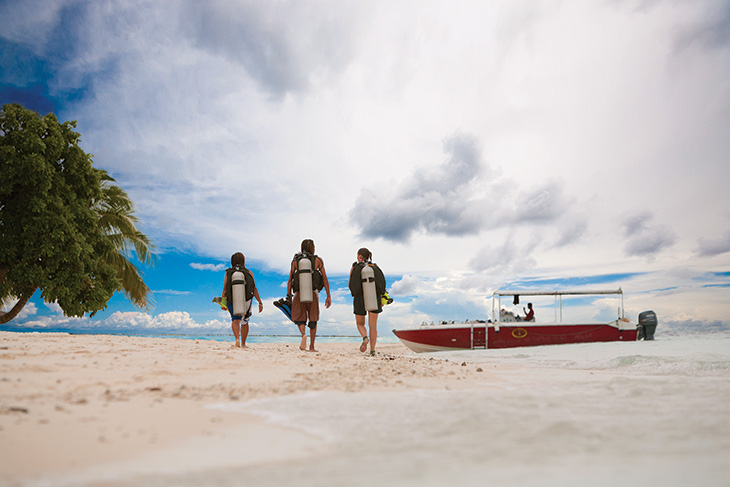
Your Limits as an Open Water Diver
Throughout this course, you’ve learned about the limits recommended for you as a newly certified PADI Open Water Diver. Let’s summarize some of them.
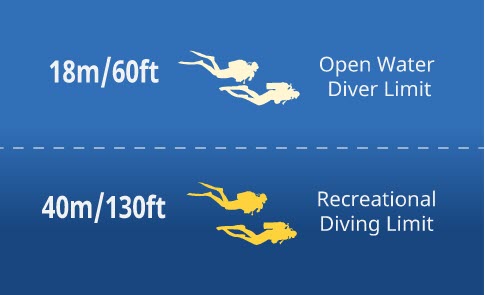
You were trained to a maximum depth of 18 metres/60 feet (or the actual depth you reached, if shallower). With additional experience and training beyond the Open Water Diver course, the maximum depth for recreational diving is 40 metres/130 feet.
You’re were also trained to dive in conditions as good as, or better than, those in which you trained, within the no stop limits of your dive computer or tables. You can enroll and participate in the PADI Advanced Open Water Diver course, Discover Local Diving program and many (but not all) PADI Specialty Diver courses to increase your skills and experience. Ultimately, it is your responsibility to set your limits for each dive based upon your assessment of your skills, comfort level and the dive conditions.
Staying Involved and Continuing Your Diver Education
Often, the biggest challenge new divers face is staying involved with diving after certification. You may already be thinking about this, and the dive community has found that three things consistently keep divers involved with diving:
- Social settings that allow divers to meet other divers who become buddies.
- Going different places to dive.
- Setting training goals and continuing to dive by continuing their diver education.
These aren’t surprising, because interacting with other divers, going diving and increasing your diving opportunities are the heart of the dive experience and lifestyle.
Meeting and making friends with people who dive. Divers everywhere connect with each other routinely through local dive centers and resorts, and the internet. Here are some suggestions:
- Stay connected with your PADI Dive Center or Resort; it’s the social hub for divers in your area.
- Exchange emails and phone numbers with people you meet on dive trips and in different courses, including this course.
- Join your dive operation’s club and attend social events. Participate with specialized dive groups that focus on your passion, like underwater photography or wreck diving. Clubs and events welcome new divers as enthusiastically as experienced ones – don’t be intimidated because you’re new to diving.
- Take part in group dive travel.
- Meet new divers and make new friends at PADI Club®.
- You can also meet new divers at other social sites like Facebook.
- Attend events like dive shows and underwater film festivals.
- Bring your nondiving friends to your dive operator and get them diving, too.
Going different places to go diving. As a new diver, you may not be comfortable planning dive trips yourself. You don’t have to. Your PADI Dive Center or Resort likely organizes local and distant guided dive outings and trips. Beyond this, virtually all dive clubs and many online social groups host dive outings in which you can participate, and often, your local PADI Dive Center or Resort is part of hosting or promoting them as well.

With experience, you may want to start planning more individualized diving (for you and a spouse or a couple of friends who are certified divers, etc.). Your dive operator can help you arrange this type of outing as well.
Continuing your diver education. This keeps you involved with diving, because it opens new opportunities for growth as a diver, lets you gain experience under supervision, and lets you try out specialized equipment that may interest you. It increases your qualifications, making it possible to participate in new environments and/or activities. Set goals about what you want to accomplish as a diver. If you think you’d like to be an instructor, it’s not too early to start on that path. Having training goals makes each course a step toward what you want to accomplish as you increase your dive opportunities.
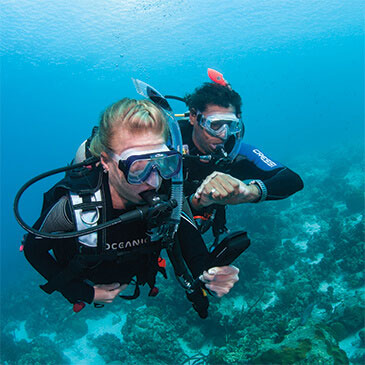
Most of your continued training is primarily guided open water diving, and many courses take only a couple of days to complete. You can begin all PADI core courses, and a growing number of other PADI programs and specialty diver courses, online at any time with PADI eLearning. Your PADI dive shop or Instructor may offer courses in connection with dive travel and social events, so they’re also opportunities to visit new places and meet people who want to dive with you.
If you have not done so already, invest in your own gear. Besides social interactions, dive outings and diver education, it has also been found that divers who invest in a BCD, regulator and instruments package, and/or an exposure suit, tend to be more active as divers. There are at least three reasons why:
- Having your own equipment is part of the fun of diving, because it’s the gear you prefer, adjusted and configured the way you like it.
- Divers who have their own equipment (beyond mask, fins and snorkel) dive more often, at least partly because it’s more convenient and more enjoyable to use your own stuff.

Having different types of gear opens more diving to you. For example, in climates with wide seasonal water temperature changes, divers who have both wet suits and dry suits have the longest dive seasons. Ask the pros at your PADI Dive Center and Resort for their expert guidance.
The PADI System of diver education is a systemized approach to learn more as a diver, but more broadly, it helps you to continue to enjoy diving. It does this by addressing your interests and by giving a clear path to reach your training goals, so that each course you take doesn’t stand alone, but is a step toward what you want to accomplish. This is one of the main “secrets” of growing as a diver and enjoying diving, with social interaction and dive outings integrated. The PADI System is flexible to meet your interests, while providing the structure you need for wide ranging, valid training that helps you become the diver you want to be.
Refer to the PADI Continuing Education Flowchart for a graphic view of your training options and paths. Ask your PADI Instructor, Dive Center or Resort about the schedules for the courses that interest you. Visit padi.com regularly for updates and additions to the PADI System.
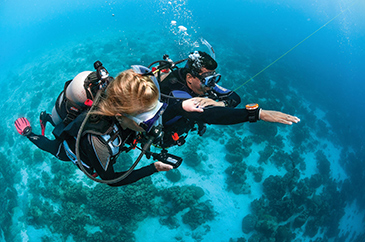
PADI Advanced Open Water Diver. The PADI Advanced Open Water Diver is typically a two-day (usually over a weekend or on holiday) course that develops your open water skills, and it’s intended for newly certified PADI Open Water Divers. It includes an introduction to deep diving, more advanced underwater navigation and three Adventure Dives that you and your instructor choose together.
Adventure Dives let you try out different underwater activities including underwater photography, night diving, wreck diving, search and recovery, altitude diving, boat diving, drift diving, dry suit diving, fish identification and more. Adventure Dives can credit toward the related specialty course.
After earning your Advanced Open Water Diver certification, you qualify to begin the PADI Rescue Diver course.
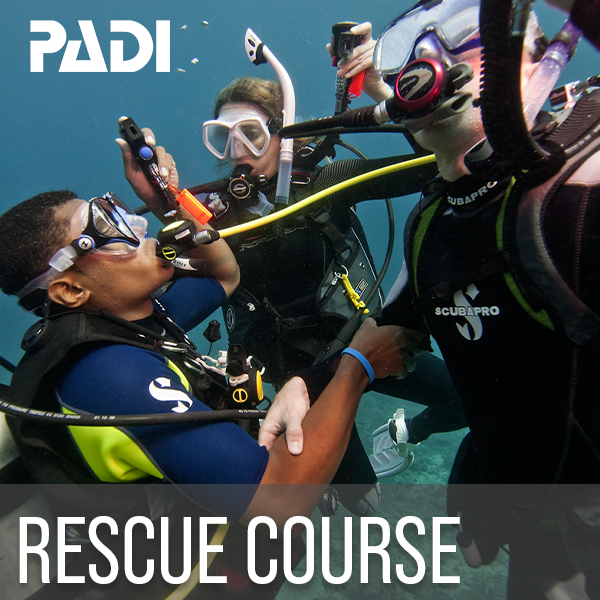
PADI Rescue Diver course. As you learned in Sections Three and Four, the PADI Rescue Diver course builds on the emergency prevention and management skills you master in the PADI Open Water Diver course. You practice adapting rescue techniques to your personal characteristics, and learn to coordinate with other divers working together to handle problems.
Although the subject is serious, many divers name the PADI Rescue Diver course as one of the most rewarding challenges on their training goal path.
PADI Specialty Diver Courses and Master Scuba Diver. PADI Specialty Diver courses qualify you in the same activities covered by the Adventure Dives, and many more. Most have two to four dives; you can complete most of them in a couple of days.
The certifications you earn in specialties like PADI Enriched Air Diver and Cavern Diver are required, for safety reasons, by the dive community to participate in those activities. Certification in other specialties, like Digital Underwater Photographer, is not required for participation, but these courses allow you to get up to speed enjoying such activities more quickly.
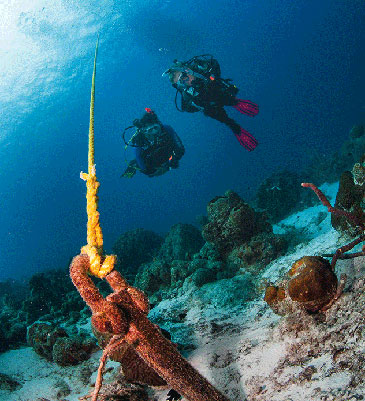
Earn five PADI Specialty Diver certifications, the PADI Advanced Open Water Diver certification and the PADI Rescue Diver certification, and have 50 dives logged, to qualify as a PADI Master Scuba Diver – the highest nonprofessional rating in recreational diving.
ReActivate. As you learned earlier, if you are away from diving for a while, the ReActivate program is available to refresh your knowledge and skills under instructor guidance.

Emergency First Response Courses. Sections Three and Four mentioned the Emergency First Response Primary and Secondary Care courses. These aren’t specifically diver courses, but CPR and first aid training that follows the same protocols used (at a lay level) by emergency medical personnel. These are good skills to have, and you need them for Rescue Diver.
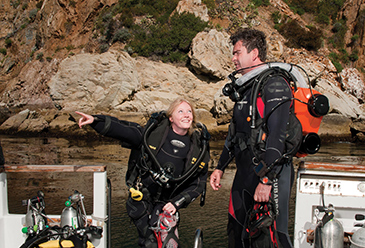
PADI Rebreather Diver. PADI Rebreather Diver teaches you to use Type R (recreational) rebreathers – scuba equipment that recycles your breathing gas – for recreational, no stop diving. This differs from the conventional open-circuit scuba you learn as a beginning diver.
Rebreather diving is growing in popularity, especially among underwater photographers and nature enthusiasts. Rebreathers are very quiet (you can get closer to fish than with open-circuit scuba and its bubbles) and offer longer dives than conventional scuba, but there are important considerations in using them. You need to complete the PADI Enriched Air Diver course before enrolling in PADI Rebreather Diver (you breathe enriched air with a rebreather).
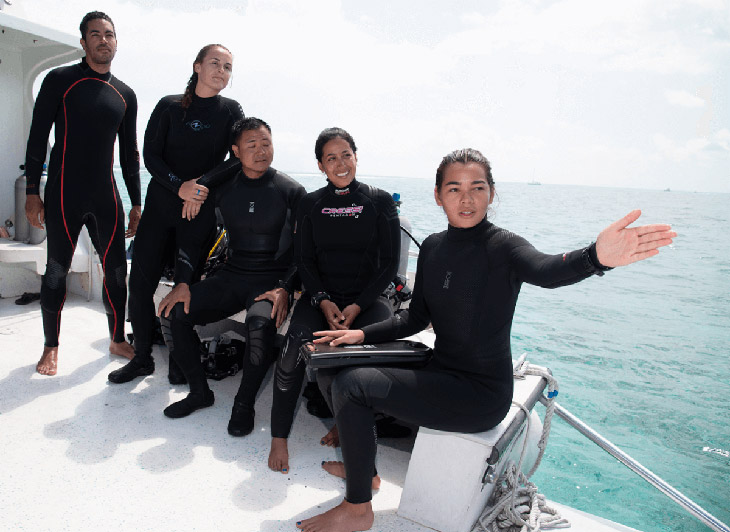
Going Pro. A surprising number of new divers know immediately that they want to become dive professionals, going perhaps all the way to PADI Open Water Scuba Instructor. If you’re one of them, see your dive shop or instructor about the PADI Divemaster course (you qualify to begin the course as a PADI Rescue Diver with 40 logged dives and Emergency First Response training) and the PADI Instructor Development Course and Examination.
This discussion just barely touches on everything the PADI System offers. For more detail, ask your Instructor, PADI Dive Center or Resort, and visit padi.com.
knowledge review and quiz
Comments

I'll take you diving!
Copyright © Larry Wedgewood Scuba Instruction All Rights Reserved















